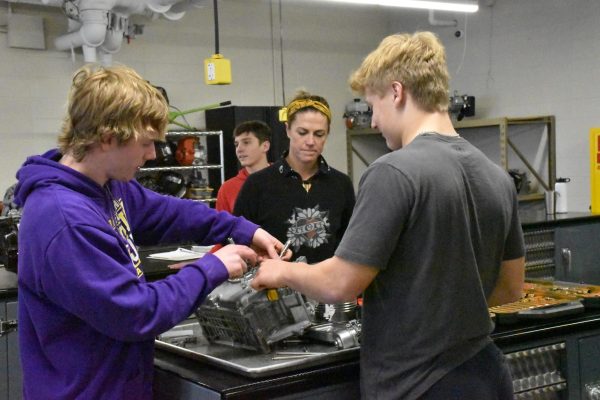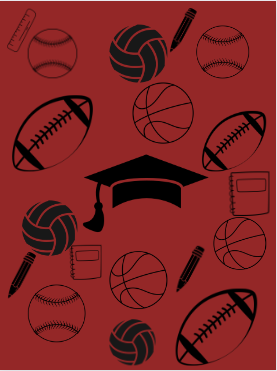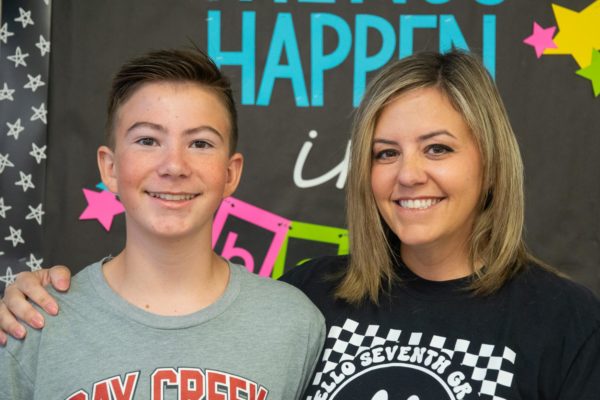Local private schools are not that different from public schools
September 20, 2021
Most students believe public and private schools are completely different. Public students usually picture private schools as stuff, strict, with school uniforms. Private school students often think public schools are unruly. How different are these two types of schools really?
Public schools, like Sevier Middle, are funded by local, state and federal governments. Private schools are funded by students paying tuition. Private schools often don’t have to follow all of the same rules public schools follow. Some are even religion-focused schools.
Kennedy Johnson is a 7h grade student at Sevier Middle. She is not a fan of private schools.
“I think private schools are unnecessary,” she said. “You have to pay to get into private schools. They don’t have to follow the state curriculum like public students do.”
Ben Holland is the headmaster at Providence Academy, a religious private school in Johnson City.
“As Head of School, I direct and provide guidance to all levels of the school Pre-K-12,” he said. “Providence Academy was established as a private Christian School committed to providing a classical and biblically-based education to young people in primary and secondary grade levels.”
Ramona Harr is the Headmaster of Ashley Academy, an independent, private school also located in Johnson City. Harr has over 30 years of experience in education. She first taught in public schools before switching to a private school.
“What impressed me from an educator’s point of view was that I was able to collaborate with colleagues about students Pre-K through 8th grade,” Harr said. “Children develop at different rates during these ages and teachers were able to discuss what progress a child would make from Pre-K to K, from K to 1st, 1st to 2nd, through 8th grade.”
Holland, too, finds big differences between a public and private education.
“Education at Providence Academy is defined as inherently different from public education in philosophy and content,” he said. Providence Academy attempts to operate as an extension of the family and to foster spiritual development and a Biblical worldview in the lives of its students. This includes leading students to develop a Biblical understanding of morality and to pursue a life that is governed by the Biblical moral code.”
Public schools are known for sports and extracurricular activities. Many public school students think that small, private schools don’t get those same experiences. Holland disagreed.
“One misconception is that a smaller school like PA doesn’t give students the opportunity for a variety of experiences, but we’re intentional about building our athletics and fine arts programs as well as our academics,” he said.
Harr feels that one of the biggest misconceptions about private schools is that only individuals with money can attend private schools. Ashley Academy provides scholarships and financial aid.
Larenzo Jeter is an 8th grade student at Ashley Academy and the current president of its student government association.
“Many people have a misconception that private schools are only for the elite and wealthy, which is not true at Ashley Academy,” he said. “Most of the students attend here because they value education at a smaller and more inclusive level.”
Harr also takes issue with the “smart private school kid” stereotype.
“Another misconception is that everyone is really smart,” she said. “Yes, we have some intelligent individuals, but more importantly is that we develop hard workers, individuals who won’t give up even though something is very hard.”
Another big difference between public and private schools, according to Holland, is class size.
“We are also used to having big classrooms filled with all of our friends but private schools have a smaller number of students which makes smaller classrooms,” he said. “Our classroom sizes are capped at K-4 at 20, 5-6 at 24, and 7-12 at 25, although not every class will have that many students. There are benefits to smaller class sizes.”
Harr agreed.
“Ashley Academy has a student:teacher ratio of 15:1 for K through 8th grade because we feel this gives us the opportunity to work individually with our students and it allows us to ‘know’ them as a person.”
According to Jeter, the smaller class sizes make a big difference.
“Our classes are smaller, thus allowing our teachers to move faster through content and get to know and work with their students,” he said. “At Ashley, the students are allowed a certain amount of freedom and choice that helps them grow and make decisions for themselves.”
Harr believes, however, that one of the biggest differences between public and private schools is simply freedom.
“Our teachers can be more creative in the classroom, because we have some flexibility in regard to the state standards. Faculty know what they are required to teach, but I do not tell them how to teach the topic. This gives teachers the freedom and opportunity to use their individual talents and interests to engage the students on a required standard.”
In public schools, what students learn is basically set up by the state government. Private schools have a little bit more flexibility.
“In elementary school, our students take Reading, Grammar, Spelling, Handwriting, Math, Science, History, Bible, Latin, Music 2-3 times a week, PE 2-3 times a week, Art History, Art Technique,” Holland said. “In Middle and High School our students continue Bible courses throughout; Latin until 10th, a variety of electives, Logic, etc.”
Another big discussion revolves around the idea of school vouchers. Some politicians believe that parents should be able to send their children to private schools using the tax money meant for public schools.
“School vouchers are fine because they give parents a choice for their child’s education,” Harr said. “However, students would still need to go through our admissions process by completing an assessment in math and reading, as well as spending some time in the classroom with potential classmates.”
Some online sources claim that private schools often lack diversity in students and teachers. Kennedy agrees.
“You have to pay to get into a private school, which means only kids that have the ability to pay can get in,” she said. “So, yes, I think schools lack diversity in students.”
Harr feels this may be a bit misleading.
“It is true that private schools can lack diversity, but keep in mind we are in East Tennessee, which lacks diversity in all schools and workplaces,” she said. “Ashley Academy has almost 20% cultural diversity, which offers a lot of opportunities and new experiences.”
Jeter agreed.
“In reality, we have a large number of students from different backgrounds, cultures, and religions,” he said. “Our teachers also come from a wide variety of milieus, which allows our students to receive information a different way each grade.”
Either way, Kennedy feels that both types of school can be effective.
“I think both give you a good education wherever you go,” she said. “I think private schools are able to have more quality things such as field trips, lunches, and extracurricular activities. Public schools work just fine.”
In the end, Harr feels that “private” is not a great term to describe a school.
“We do not view ourselves as better than other schools or other people,” she said. “This is why I prefer the language ‘independent school’ vs. ‘private’ because it diminishes the impression that we are elitist. Our focus is on educating and growing the whole child. We realize our setting is not for everyone, but we are very good for some, and it’s important that we exist because we are a choice.”
This story was originally published on The Sequoyah Scribe on August 30, 2021.
































![IN THE SPOTLIGHT: Junior Zalie Mann performs “I Love to Cry at Weddings,” an ensemble piece from the fall musical Sweet Charity, to prospective students during the Fine Arts Showcase on Wednesday, Nov. 8. The showcase is a compilation of performances and demonstrations from each fine arts strand offered at McCallum. This show is put on so that prospective students can see if they are interested in joining an academy or major.
Sweet Charity originally ran the weekends of Sept. 28 and Oct. 8, but made a comeback for the Fine Arts Showcase.
“[Being at the front in the spotlight] is my favorite part of the whole dance, so I was super happy to be on stage performing and smiling at the audience,” Mann said.
Mann performed in both the musical theatre performance and dance excerpt “Ethereal,” a contemporary piece choreographed by the new dance director Terrance Carson, in the showcase. With also being a dance ambassador, Mann got to talk about what MAC dance is, her experience and answer any questions the aspiring arts majors and their parents may have.
Caption by Maya Tackett.](https://bestofsno.com/wp-content/uploads/2024/02/53321803427_47cd17fe70_o-1-1200x800.jpg)
![SPREADING THE JOY: Sophomore Chim Becker poses with sophomores Cozbi Sims and Lou Davidson while manning a table at the Hispanic Heritage treat day during lunch of Sept 28. Becker is a part of the students of color alliance, who put together the activity to raise money for their club.
“It [the stand] was really fun because McCallum has a lot of latino kids,” Becker said. “And I think it was nice that I could share the stuff that I usually just have at home with people who have never tried it before.”
Becker recognizes the importance of celebrating Hispanic heritage at Mac.
“I think its important to celebrate,” Becker said. “Because our culture is awesome and super cool, and everybody should be able to learn about other cultures of the world.”
Caption by JoJo Barnard.](https://bestofsno.com/wp-content/uploads/2024/01/53221601352_4127a81c41_o-1200x675.jpg)













